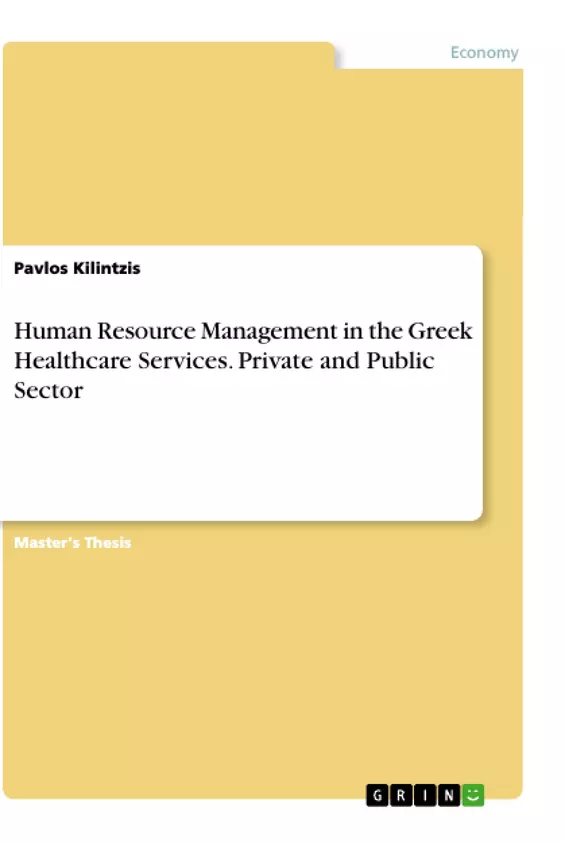This dissertation investigates the operation of Human Resource Management (HRM) in the Greek healthcare, with emphasis on the differences and similarities between the Greek public and private healthcare service's sector. HRM was initially analyzed according to its five basic objectives. According to them, a semi-structured questionnaire was formatted and distributed to a public and a private healthcare unit in order to collect the data and interpret the results. This specific comparison indicated a clear tendency which – with the addition of more healthcare units in the research – can establish a nationwide statistical result. The current study constitutes a "rare" quantitative and qualitative measurement of the specific objectives that HRM consists of and offers specific data that might constitute a good basis for further HRM research on the Greek Healthcare System and its parameters.
Inhaltsverzeichnis (Table of Contents)
- 1. INTRODUCTION
- 1.1 A Historical background of Human Resource Management (HRM)
- 1.2 HRM objectives - the evolution of Personnel Management
- 1.3 Analysis of HRM objectives
- 2. THE HUMAN RESOURCE FOR HEALTH (HRH)
- 2.1 The need for HRH development and health policies
- 2.2 Limitations of current approaches to HRM and workforce issues on health policies
- 2.3 The challenges of health systems reforms and the HRM in healthcare organizations
- 3. THE CASE OF GREECE
- 3.1 General frame and procedure of selection and recruitment
- 3.2 Training and Development
- 3.3 Performance Appraisal
- 3.4 Rewards - Awards
- 3.5 Labor Relations
- 3.6 Career and Evolution Ranking Scale
- 3.7 Disciplinary control system in the Public Health Sector
- 4. RESEARCH METHODOLOGY
- 5. RESEARCH AND DISCUSSION
- 5.1 Descriptive Statistics
- 5.2 Inferential Analysis
- 5.3 Study Limitations
- Quote paper
- Pavlos Kilintzis (Author), 2013, Human Resource Management in the Greek Healthcare Services. Private and Public Sector, Munich, GRIN Verlag, https://www.grin.com/document/504586



